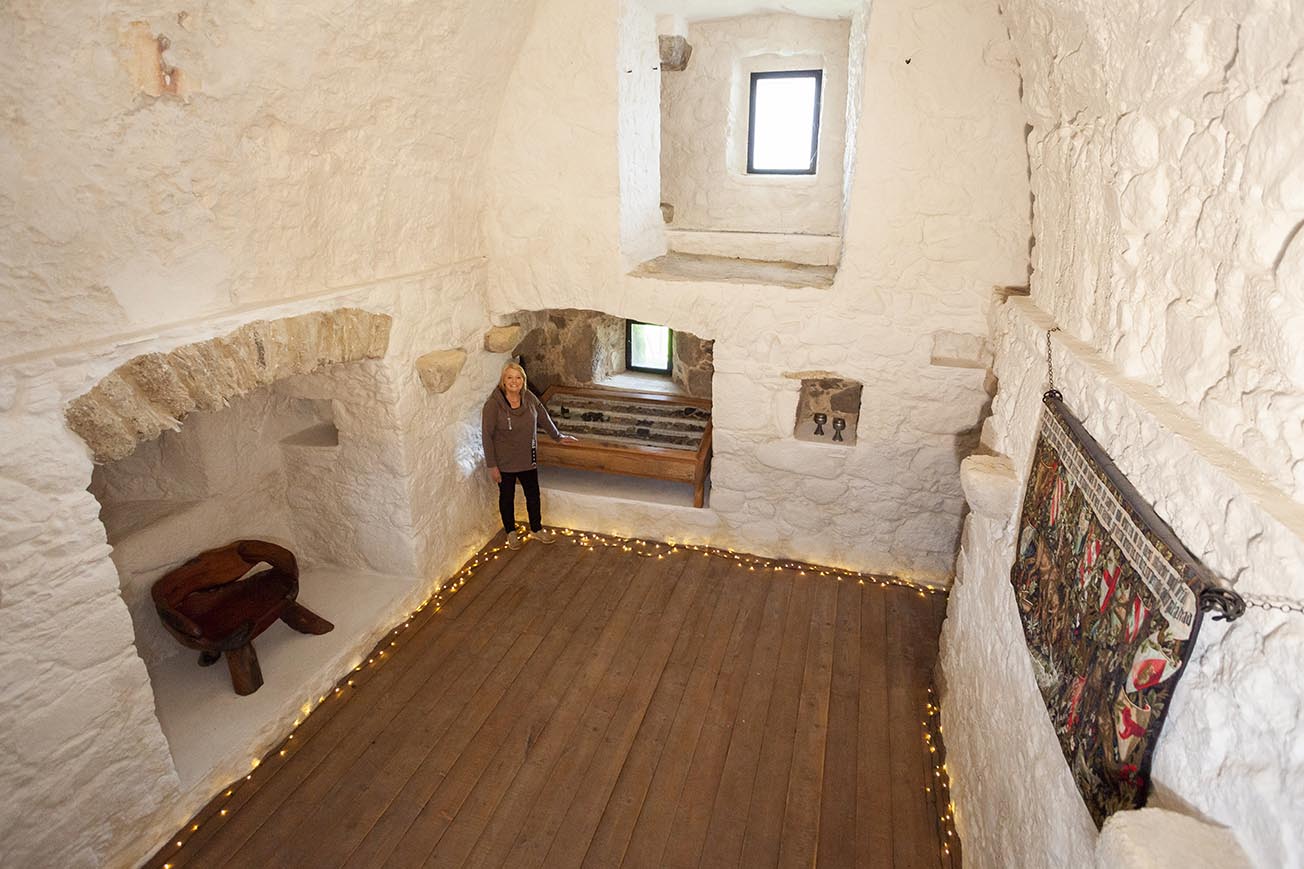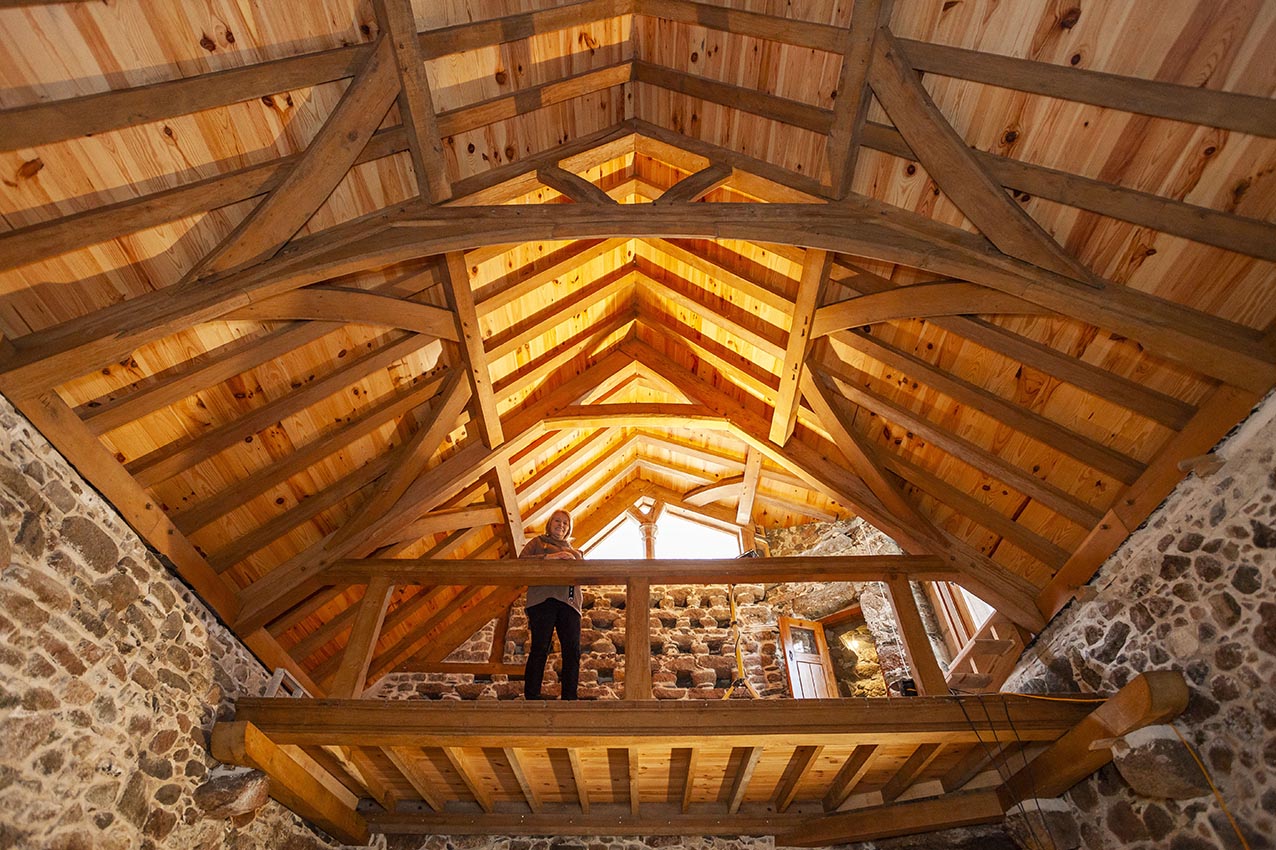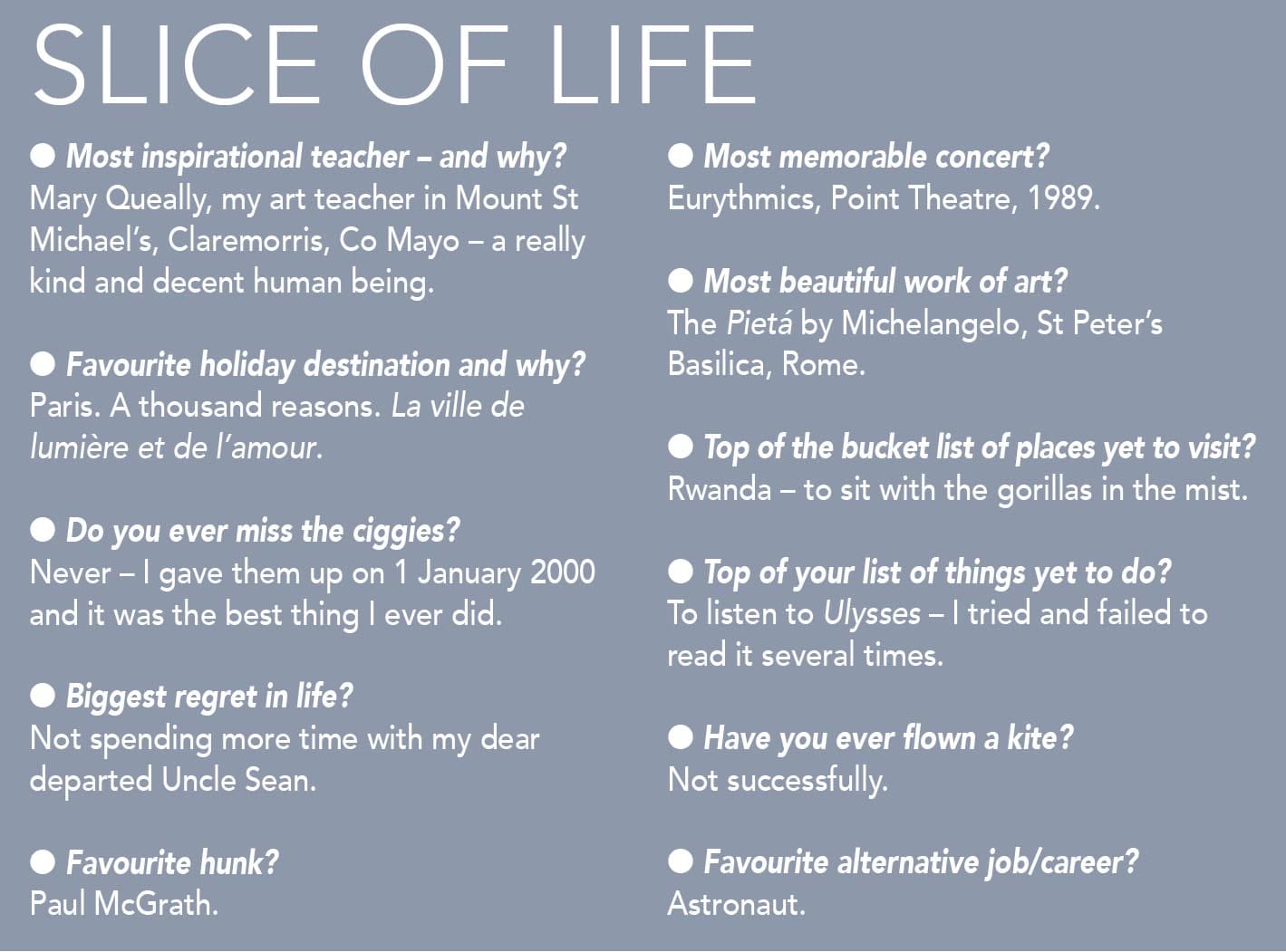They all mattered and are part of her story, but this is where her heart is. If an Englishman’s home is his castle, then this Mayowoman’s castle is her home. And she’s coming home. For good. Nearly 30 years after she first walked in the door at Blackhall Place, Mary Keane walked out for the last time, on 30 June 2022.
For most of that time, she was the yin to Ken Murphy’s yang. A double act that was often compared to an old married couple – but that would do both of them a disservice. They discovered each other’s strengths and found they were complementary. For 26 years they soldiered together and then, in March 2021, Ken suddenly left the band.
It shouldn’t have been a surprise, as this coincided with his 65th birthday, but most people assumed he would extend until a replacement was found. So, like Hemingway’s fictional bankruptcy, he was going gradually, then suddenly.
At swim two birds
Mary Keane was catapulted into a job she didn’t seek and didn’t want. For so long, being the engine powering a well-oiled machine was just fine. A year before her 60th birthday, she was thrust forward, dropped in the ocean and expected to swim.
“Ken had offered to stay until his replacement had been found, and I thought that was the best thing for the Society. As I understand it, no one took him up on that offer. He was then advised that there was no necessity for him to stay and he could retire on his official retirement day.
“I then got a call to say that he would be leaving in March and that, as I was the deputy director general, who would be better to hold the fort? I did go back a couple of times to say I didn’t think it was the right decision for the Society, and that Ken and myself should stay until a new person was found. I made it clear I wouldn’t be applying for the position, and I didn’t want the position. I was told it would only be for a short period of time, likely to be about three months.”
She took on the role – and not only did she swim, she took to it like a duck to water. It turns out that her own doubts were unfounded, but she found it very draining, particularly as she was performing the role of DG and deputy simultaneously.
Lonely station
“It was a difficult time – we were still in COVID and there were all the stresses that go along with that. We also had a relatively new president. Ken had me, but I didn’t have a deputy. It’s always easier having two people rather than one to address a problem.
“Because of the pandemic, a lot of people weren’t around to help with the heavy lifting. It was a fairly lonely station. It was expected to be three months, but it was ultimately ten months. I wasn’t privy to the recruitment process, so I didn’t have any visibility about when it was likely to end. I was the reluctant DG, no question.”
Although she looks back on the time as one of stress and isolation, her performance in a role she didn’t want impressed many. Although most engagements were remote, she interacted with many bar associations along with the then president, James Cahill, and starred in an Oireachtas hearing on judicial appointments, reciting the memorable phrase: “Diversity is being invited to the party – inclusion is being asked to dance.”
Dance partners
It had been a long journey to this particular party, and she had a few dance partners along the way.
Born in Mayo in 1962 to two schoolteachers, Tom and Mary, she was one of five siblings. Primary school was a two-teacher operation (her parents), and she then followed the path of many middle-class children from the country in those days.
Boarding school in Claremorris was a joy, an opportunity to make friends, which would have been more challenging at home in a remote country area.
Six years later came the inevitable decision about what to do next. Ireland in 1980 was still a long way from the diverse, progressive society of today, and her parents still expected young Mary Keane to do teacher training or enter the bank or the Civil Service.
Trinity seemed a much more interesting option and, after hiding the offers from those other institutions from her parents, she started a degree in English and German, with the intention of being an interpreter. The only downside was not liking the language part of the course.
Ultimately, her parents got their way, and she went to the Civil Service – which she found mind-numbingly boring.
“After two years, I applied for special leave without pay, and did law in UCD.”
Upon returning to the Civil Service, she was farmed out to the Companies Office before embarking on the Bar at night, which was completed in 1989.
“I did it with the intention of completing professional training. It wasn’t possible to go to the Law Society full-time because I couldn’t afford it. The Bar was part-time, so I could continue at the Civil Service.”
Tunnelling out
An enticing ad in 1990 persuaded her that a career in Craig Gardner might fulfil her ambitions, but two years in the tax department didn’t tick the boxes. “I had a bellyful of exams by then. I spent two years avoiding the AITI exams while tunnelling out of Craig Gardner.”
After successfully performing an impression of Andy Dufresne in The Shawshank Redemption, an ad in the newspaper caught her attention: the Law Society was looking for an administrative assistant (legal) to then director general Noel Ryan. Experience in the Civil Service was deemed to be an advantage. Right up her street. It was the start of a Law Society career that would end at the top of the pyramid.

It was a steep learning curve and, before Ken Murphy came rolling in, Noel Ryan showed her the ropes.
“I was Noel Ryan’s sidekick. He was a very hard taskmaster, but an amazing mentor. I learned more from him in the years I worked with him than in any subsequent or prior two-year period.”
When she joined, the Law Society was a small organisation, with about 53 employees, but “we were hard working and very focused on policy”.
Taking shape
Within six months, she was the policy development executive, but it was with Ken Murphy’s arrival, two years later, that her career took shape. Was there much difference between the approaches of the two DGs?
“Ken was a solicitor, Noel wasn’t. He was a civil servant by way of background. Ken was good in relation to PR, and was always open to recognising other people’s abilities. He wouldn’t ‘correct my homework’ as much as Noel would have done.”
In 1996, she was promoted to director of policy, which expanded to policy, communication and member services a year later. Shortly after, she was appointed deputy director general, where the partnership with Ken Murphy began to take shape.
“It evolved. There was no sitting down saying: ‘you have to do the work and I will do front-of-house’. I wouldn’t be particularly fond of front-of-house anyway, and certainly wouldn’t want to be a spokesperson.”
The contrast between their two working styles was never more apparent than in a perusal of their respective offices. While Murphy’s den was, shall we say, lived in, Keane’s is a model of organisation, order and art.
Pictures with the late, great Moya Quinlan and retired Court of Appeal judge Michael Peart take pride of place with strategically placed sculptures and paintings. The main photo, though, is with the late Seamus Heaney, which also provides the avatar to her WhatsApp profile.
The desk is clean and there is no visitor’s chair. Long visits were not welcomed (unless your name was Seamus Heaney or Paul McGrath).
The famous ‘to-do’ lists
But she got things done – it was her signature. Those of us who worked with her on the Coordination Committee (which consisted of the most senior members of the Council) will have recurring nightmares of the famous ‘to-do lists’. Every meeting had such a list at the end, and woe betide the committee member who returned to the next meeting without their homework done.
She regards one of her best achievements to be the Future of the Law Society Task Force, which set out as an aspirational think-tank and finished up with a long list of recommendations, most of which were implemented. Any that weren’t was because they were discounted. None remained on a shelf.
“When someone said we needed to do this or that, my focus was on how do we make this happen? Where is the ‘to-do list’?”
Future Coordination Committees will no longer be terrorised by the list. She applied for early retirement last year and it was agreed in December that she would depart in June. Her successor as DG, Mark Garrett, took over the reins on 4 January this year.
The experience of being both director general and deputy director general for ten months had taken its toll. An early retirement scheme (which has been availed of by a number of other senior executives) began to look very attractive.
“I had already applied for a career break, but once the ‘Open Doors’ retirement programme came up, I saw an opportunity. I was worn down at that point. I was happy to support Mark getting started, but I think six months was plenty.”
Time of flux
With Ken Murphy gone for the last 15 months and the directors of regulation and finance – John Elliot and Cillian MacDomhnaill, respectively – also departing this summer, it’s a time of flux for Mark Garrett.
“I think that Mark is very lucky to be coming into a role knowing that he has the bedrock of such experienced and professional staff. Of course, there is a lot of change afoot, and change is good and necessary.”
And change is what lies ahead for Mary Keane.
She will have plenty to keep her busy, at least initially. Being chairperson of the National Gallery, a role of which she is immensely proud, will continue to take up a good chunk of her time. Her board tenure will expire in two years, but she intends to attack that job with even more fervour than before. “I like the way that art affects people and the way it makes them feel. I like the way it makes me feel.”
Norman obsession
And, of course, her castle. Back in 2002, she was looking for a bolthole by the sea and ultimately purchased a coach-house in Carne, Co Wexford. The coach-house was adjacent to a derelict Norman tower dating from the early 1400s.
“I kind of became obsessed with the tower. I loved that it had been there so long.”
So in 2004, she sold her small house in Dublin and the coach-house. This gave her the wherewithal to buy the tower and adjoining house on an acre, extending to seven acres in 2007. She has been restoring it slowly ever since.
Ultimately, the tower, which is not far from final restoration now, may be used as a performance space.
“There will not be weddings or bridezillas near the place though – I couldn’t cope!”

Why put so much time and love into a building?
“It’s all about legacy. I’m a singleton; I don’t have children. Most people’s legacy are their children. This is a building I have saved, because it would have crumbled without me. It will be there long after me. That, and being involved with the gallery, which is part of the heritage of the State, is very important to me.”
Of course, she is not entirely single. Cocoa and Panther would have something to say, or rather purr, about that. Referred to simply as ‘the boys’, they are part of the family in Wexford and roam the battlements like the feline warriors they are.
While her long-lasting legacy may well be the castle, the mark she has left on the Law Society will be permanent. The first female director general may have been a reluctant one, but she steered the legal profession’s representative body through one of its most challenging times, and did so with grace, monumental efficiency, and no little aplomb.
“I will miss the building and I will miss the staff. I’ll miss the buzz, I think. I don’t know what’s coming next, but I hope it will be interesting. I have a fairly extensive to-do list prepared for myself!”

Stuart Gilhooly SC is a partner at HJ Ward LLP in Dublin and is a past-president of the Law Society of Ireland.
Read and print a PDF of this article here.